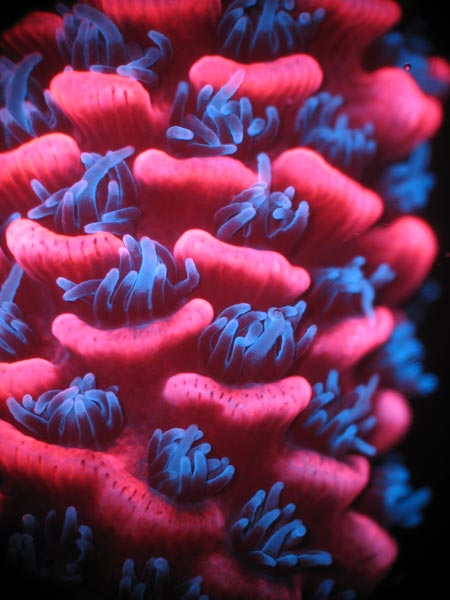As Corals Die Off, Scientists Watch for Signs of Evolution

This Behind the Scenes article was provided to LiveScience in partnership with the National Science Foundation.
Our oceans are getting warmer and more acidic every year; as a result, coral reefs are rapidly declining. Biologist Mikhail Matz is monitoring this process at the genomic level, in anticipation of evolutionary developments that may signal better news.
"Corals have a substantial potential to evolve, and this is the high time for them to do it," said Matz, assistant professor of integrative biology at The University of Texas at Austin and an expert on coral DNA. "I want to watch them very closely as it happens to see how evolution works."
Only a few years ago, studying an organism like coral through its genes would have been impossible because of the cost and time involved. Now, with the emergence of next-generation gene-sequencing devices, scientists are moving beyond mice, flies and worms — the traditional platforms for DNA research — to study the genetic makeup of a much wider variety of organisms.
In 2009, Matz and his team sequenced the entire transcriptome (the set of all RNA molecules, reflecting the genes at work at a particular moment) of a common Pacific coral for a fraction of the cost of previous efforts. For Matz's purposes, the transcriptome is a better resource than the genome, providing a concise summary of the information relevant to the study of evolution. Matz's study was one of the first successful full-transcriptome sequences for a novel model organism.
However, sequencing an organism's transcriptome is only the beginning. The next step is interpreting the genetic data to make connections between genes and traits.
"How does the genome drive variation in gene function, and how does it lead to physiological modifications and eventually adaptation to the changing environment?" Matz asked. "We want to forge those links."
Get the world’s most fascinating discoveries delivered straight to your inbox.
Matz is one of the first researchers to use next-generation sequencers to study evolution. In doing so, he is developing a workflow that will allow the broader biological community to use next-generation sequencing effectively.
"Imagine someone having an evolution- or biomedicine-related question that can be best addressed using some obscure marine worm as a model," Matz explained. "We want to show how to do it – basically, how to elevate your favorite worm to the state of full-blown genomic model in a matter of several months."
Perhaps paradoxically, one of the biggest problems for biologists is that next-generation sequencers produce too much data. It takes the Texas Advanced Computing Center's Ranger supercomputer, with its massive size and speed, to make full sense of it.
Matz relies on Ranger’s power to experiment with various approaches, select optimal procedures, and eventually bring the analysis within the reach of standard desktop computers.
At the same time, Matz continues to analyze the coral results, waiting for the telltale genomic signs of evolution.
"The old corals are dying, yes, but that's a part of evolving. This may be horrible news, or this can be good news, all depending on how the next generation of corals turns out," Matz said. "Once we know how corals evolve, we might be able to help them in this, or at least avoid standing in evolution's way."
- Top 10 Surprising Results of Global Warming
- Image Gallery: Incredible Coral
- Increasing Acid Could Kill Most Corals by 2050
Editor's Note: This research was supported by the National Science Foundation (NSF), the federal agency charged with funding basic research and education across all fields of science and engineering. Any opinions, findings, and conclusions or recommendations expressed in this material are those of the author and do not necessarily reflect the views of the National Science Foundation. See the Behind the Scenes Archive.


